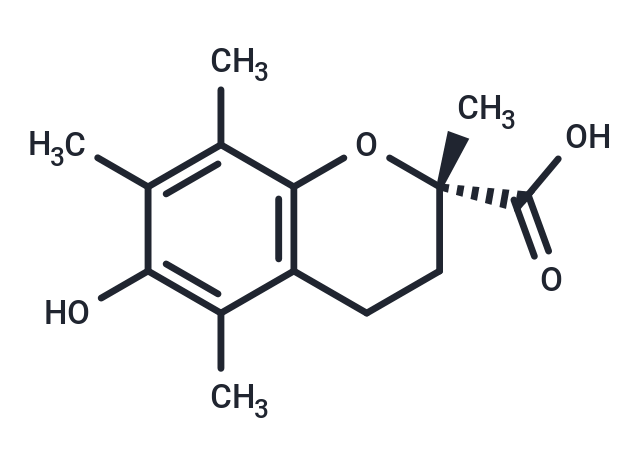Shopping Cart
- Remove All
 Your shopping cart is currently empty
Your shopping cart is currently empty

(S)-Trolox, an analogue of vitamin E, substitutes the phytyl chain with a carboxyl group. This compound serves as a model substance in structural studies and as a standard for assessing antioxidant activity. Moreover, (S)-Trolox exhibits potent and specific neuroprotective and antioxidant properties.

| Pack Size | Price | Availability | Quantity |
|---|---|---|---|
| 25 mg | $2,420 | 3-6 months | |
| 50 mg | $3,180 | 3-6 months | |
| 100 mg | $4,300 | 3-6 months |
| Description | (S)-Trolox, an analogue of vitamin E, substitutes the phytyl chain with a carboxyl group. This compound serves as a model substance in structural studies and as a standard for assessing antioxidant activity. Moreover, (S)-Trolox exhibits potent and specific neuroprotective and antioxidant properties. |
| In vitro | In the absence of MK-801, (S)-Trolox displays marginal neuroprotective effects. In the presence of MK-801 (10 μM), the neuroprotective efficacy of (S)-Trolox is greatly enhanced, giving rise to a recovery in MTT-reductase activity equivalent to 80–100% of control cultures. (S)-Trolox displays EC50 of 78 μM. The fluorescence increase in IAA-stimulated DCFH-DA-loaded cultures is inhibited in a dose-dependent manner by the antioxidants (S)-Trolox (IC50 of 97 μM). The antioxidant (S)-Trolox demonstrate apotent and specific neuroprotective action in an in vitro model of neurodegeneration induced by inhibition of the glycolytic enzyme GAPDH[1]. |
| Molecular Weight | 250.29 |
| Formula | C14H18O4 |
| Cas No. | 53174-06-4 |
| Relative Density. | 1.219g/cm3 |
| Storage | Powder: -20°C for 3 years | In solvent: -80°C for 1 year | Shipping with blue ice. |

Copyright © 2015-2025 TargetMol Chemicals Inc. All Rights Reserved.